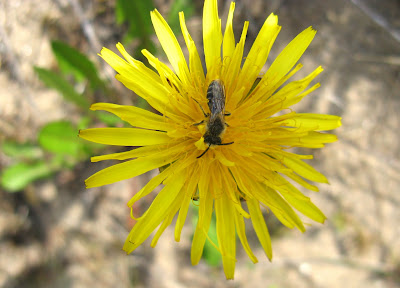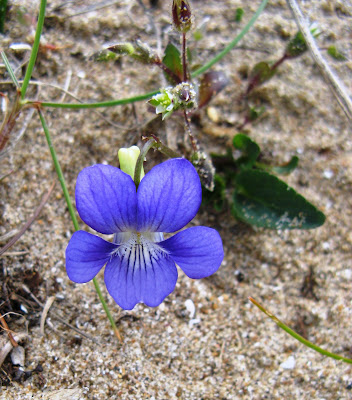


+on+sand+Oxwich.JPG)




 At Oxwich, Wild pansy (Viola tricolor) and Kidney vetch (Anthyllis vulneraria) were both in flower. There were also Green bottle flies (Lucilia caesar) and small bees (Chelostoma florisomme) were buzzing around along with more Bumble bees. Viviparous lizards (Lacerta vivipara) were also active. In Bynea, Great mullein (Verbasco thapsus) had unfurled. There were masses of Oystercatchers (Haematopus ostralegus) on a small island near Loughor bridge. A Grey seal (Halichoerus grypus) had hauled out on a mini sandbank.
At Oxwich, Wild pansy (Viola tricolor) and Kidney vetch (Anthyllis vulneraria) were both in flower. There were also Green bottle flies (Lucilia caesar) and small bees (Chelostoma florisomme) were buzzing around along with more Bumble bees. Viviparous lizards (Lacerta vivipara) were also active. In Bynea, Great mullein (Verbasco thapsus) had unfurled. There were masses of Oystercatchers (Haematopus ostralegus) on a small island near Loughor bridge. A Grey seal (Halichoerus grypus) had hauled out on a mini sandbank.
%20mating%20NWCW.jpg)


No comments:
Post a Comment